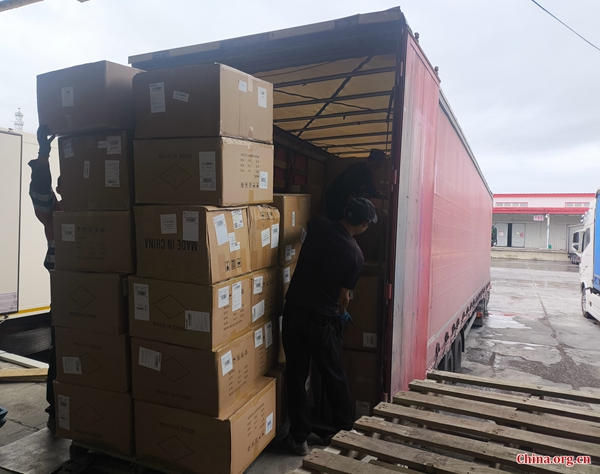Xinjiang's Baktu Port connects China to Central Asia and beyond
Source:China.org.cn Release time:2024/10/16
From Hami melons in Xinjiang to bell peppers from Shandong, a wide array of goods passes through Baktu Port in Tacheng, northwest China's Xinjiang Uygur autonomous region. The port also handles small commodities from Shenzhen and Yiwu, as well as automobiles, machinery and precision instruments. These products travel to Russia and Central Asia, reaching destinations as far as the United Kingdom and Denmark in Europe.

Photo taken on Sept. 26, 2024, shows a view of Baktu Port in Tacheng, northwest China's Xinjiang Uygur autonomous region. [Photo by Xu Xiaoxuan/China.org.cn]
Baktu Port, a key gateway on the China-Kazakhstan border, is playing a vital role in China's westward opening-up and the development of the Silk Road Economic Belt.
Known as the "Central Asia Trade Corridor," the port facilitates rapid trade between China and its western neighbors. Li Xuefeng, a logistics company manager in Tacheng, highlighted the port's efficiency, "Fruits and vegetables arriving in the morning in Tacheng can be on Russian dinner tables by evening."
Baktu Port operates year-round with a 7-day/12-hour clearance system and features a "green channel" for agricultural products. The port has processed up to 607 vehicles in a single day.
"When agricultural products arrive at our company, they undergo unloading, sorting, reloading and paperless customs clearance, allowing shipments to leave the country in just four hours," noted Li.

Workers load goods onto a truck at a logistics company in Tacheng, Xinjiang, Sept. 26, 2024. [Photo by Xu Xiaoxuan/China.org.cn]
Traders are increasingly choosing land routes over air and sea, citing lower costs and faster delivery times. From January to July this year, Baktu Port processed 383,000 tons of imports and exports, a 3.7% increase year on year.
In December 2020, China's State Council approved a key pilot zone for development and opening up in Tacheng, aiming to deepen cooperation with neighboring countries and accelerate the development of core regions in the Silk Road Economic Belt.
Port trade is one of four key areas in the pilot zone's development. Jia Xingling, a member of the Tacheng Prefecture Port Committee of the Communist Party of China, emphasized Baktu Port's importance, "As a highway port, Baktu offers some of the best commercial conditions for road trade."
Baktu Port is also Xinjiang's first pilot port for modernizing trade between border residents, with the efficiency of customs clearance and volume of transactions continuously improving. From January to July this year, Tacheng Customs reported this trade reached 340 million yuan ($48 million), up 82% from last year. Over 45,000 traders earned 270 million yuan collectively, exchanging 36 types of goods with five neighboring countries.
Beyond port trade, the pilot zone focuses on agricultural processing, advanced equipment manufacturing and modern logistics. Emerging sectors like biopharmaceuticals, international finance and cross-border tourism are also being cultivated. Infrastructure development, including water, drainage and power systems, has been completed. Additionally, 350,000 square meters of standardized factory buildings have been constructed.
Baktu Port serves not only as a crucial channel to Kazakhstan but also as a key link to Central Asia and Europe, solidifying its role as a vital hub in the Silk Road Economic Belt. The port's infrastructure and operational efficiency continue to improve, further driving Tacheng's development as a significant gateway for international trade.








